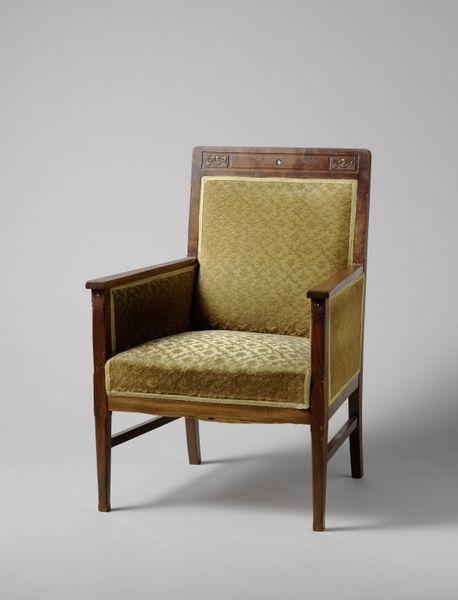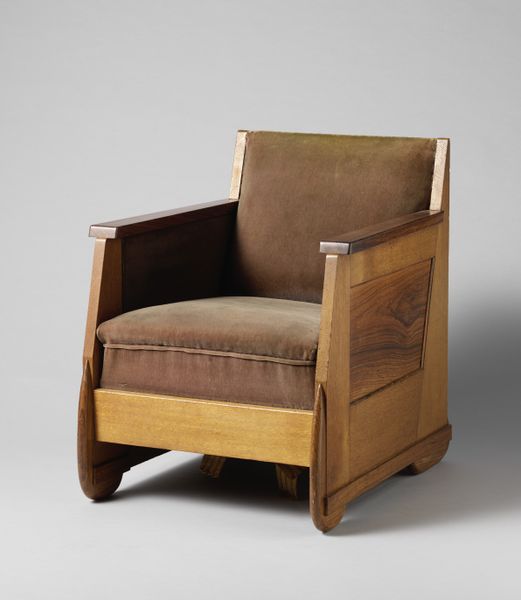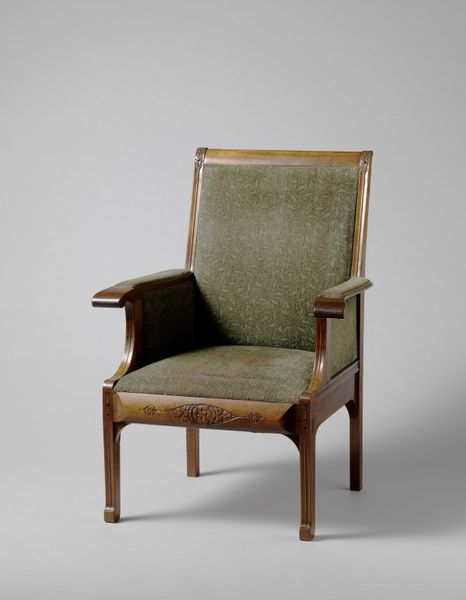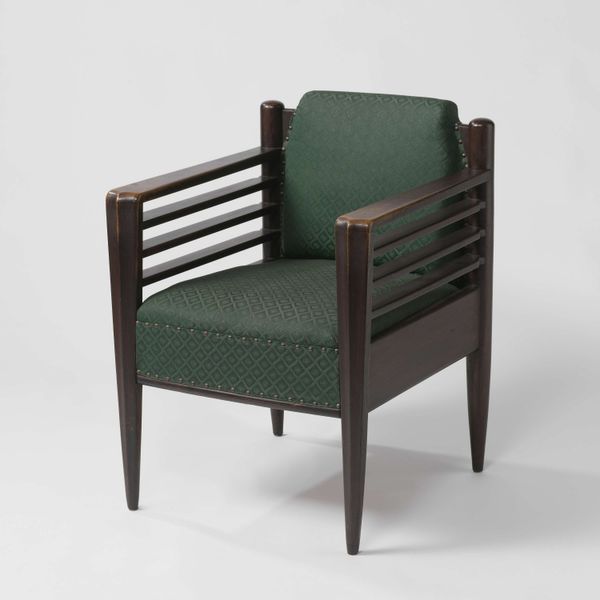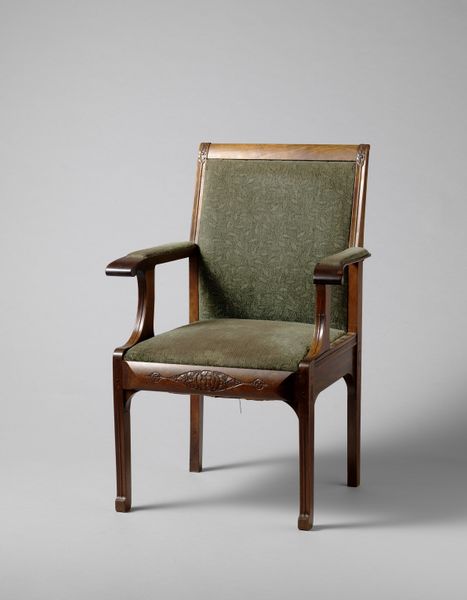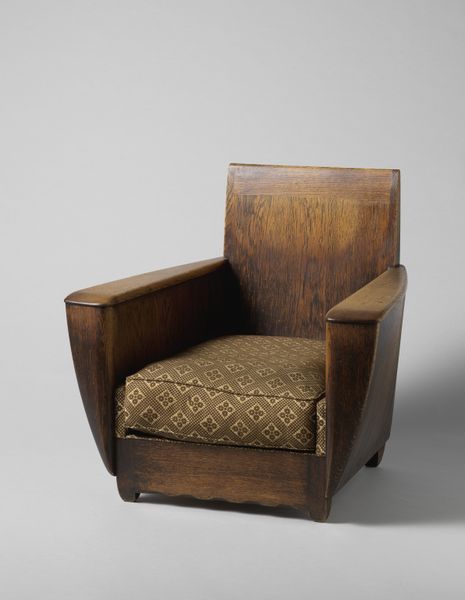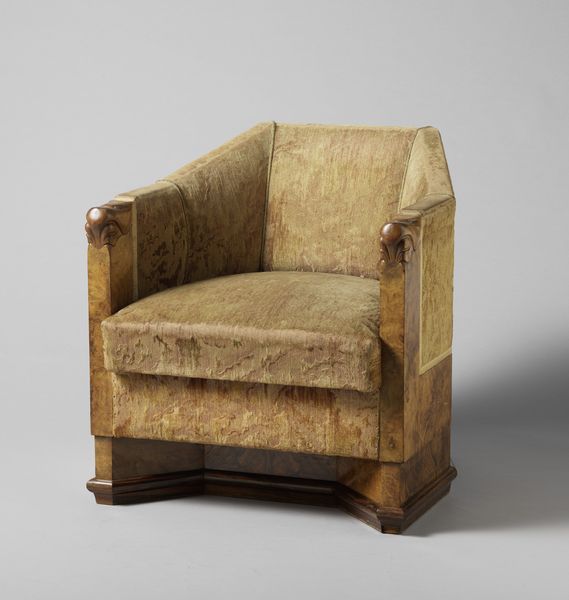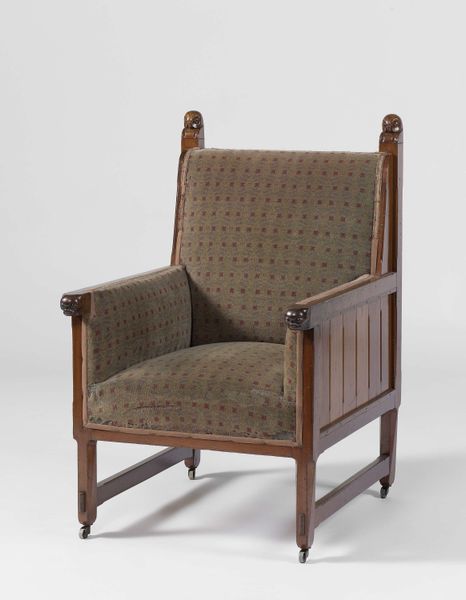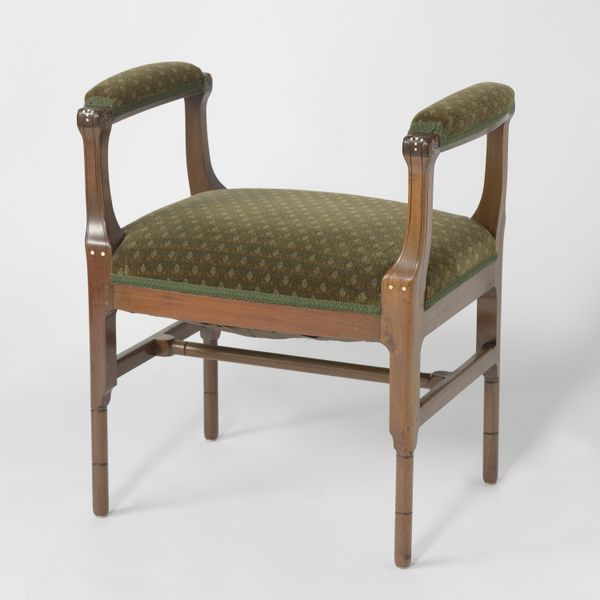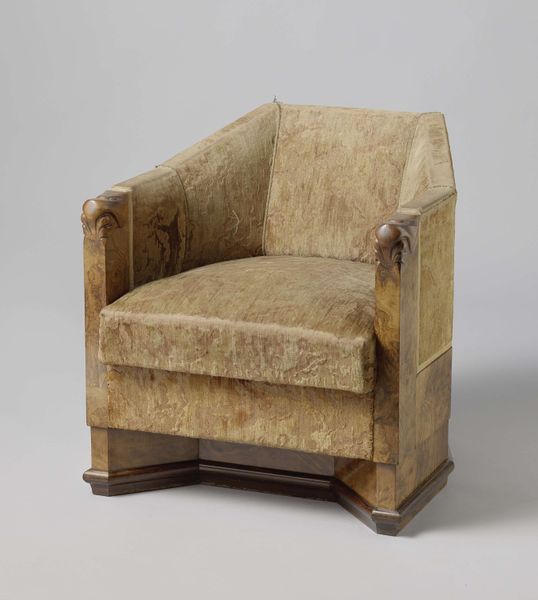
textile, wood
#
arts-&-crafts-movement
#
textile
#
form
#
geometric
#
wood
#
decorative-art
Dimensions: height 72.0 cm, width 70.0 cm, depth 68.0 cm, weight 24.8 kg
Copyright: Rijks Museum: Open Domain
Curator: Ah, there's something wonderfully inviting about this "Fauteuil," dating from 1910 to 1927 and residing here at the Rijksmuseum. It's credited to E.G.C. Schubad, isn’t it? It's such a sturdy-looking chair! Editor: It does seem cozy. I'm struck by how boxy it is – a geometric green cube inviting us to contemplate stillness. The muted green and exposed wood evoke a natural, grounded feeling. It suggests an unpretentious kind of comfort, doesn't it? Curator: Absolutely. It's interesting to consider the socio-political context of its creation within the Arts and Crafts movement. This piece rebels against mass production, advocating for the value and ethics of handcraftsmanship. The unadorned wooden frame contrasts elegantly with the textile, highlighting the quality and labor invested in its making. Editor: Yes, the decorative art aesthetic is very subtle, isn’t it? It makes me wonder about its purpose within a domestic setting. How does it shape ideas around gendered domesticity? Who sat here, what labor did this object facilitate or render invisible? The texture invites touch, implying intimate moments of repose. Curator: And don’t forget the implicit symbolism within the “form” itself. Look at the wood. The designer purposefully left it visible to illustrate a return to natural materials, right? Perhaps suggesting the idea of moving backwards towards the perceived idyllic harmony. The curves on the side remind me of the circle of life, if you want my interpretation! Editor: Indeed, and how might the Arts and Crafts movement’s rhetoric of simpler living resonate – or conflict – with the realities of colonialism and industrial capitalism at the time? It seems a fair reflection to state that movements aren’t always free from contradictions. The question becomes how we respond and adapt. Curator: True, a fair and true reflection! Its timeless simplicity suggests not only durability but also adaptability; I see it fitting into many contemporary interiors, offering a peaceful respite from modern-day anxieties. It's all about finding that personal haven within chaos, right? Editor: Agreed. The chair invites critical reflection on past and present ideologies embedded in everyday objects, suggesting alternative values and challenging the narratives we project on simple domestic space. Curator: So true, and there's just something wonderfully comforting about knowing a craftsperson shaped this very chair decades ago. It whispers, in a silent way, of patience, skill, and dedication. Editor: Ultimately, it speaks volumes about the possibilities embedded within design—possibilities to advocate for mindful existence, interrogate social power, and offer a seat at the table for critical dialogues about art, culture, and society.
Comments
No comments
Be the first to comment and join the conversation on the ultimate creative platform.
